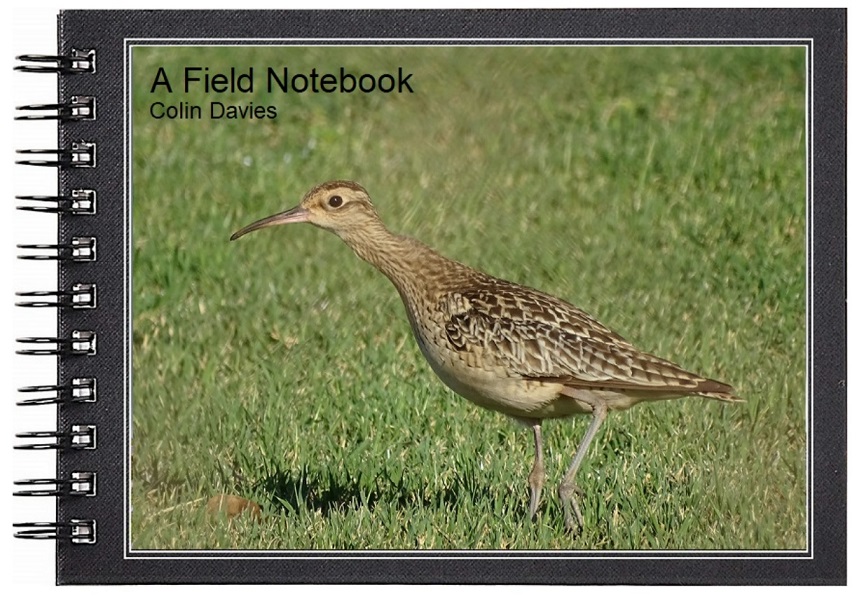Halloween at Pennington Flash. I'd always planned to go this afternoon, but when Bill Harrison found a winter plumage red-throated diver just off the spit this morning, I dusted down my bike and set off to see it. First off I went into Horrock's hide, but the mist had come down a bit and viewing was poor. Bill told me the diver had last been seen heading into the western bay so I headed over to the Point. From here I could see the bird, but it was swimming over towards the yacht club, so I got back on the bike and cycled round to Green Lane. By the time I got there the bird had gone back towards the Ruck. Doh! I went home for my lunch.
In the afternoon I reverted back to the original plan and walked around the flash. The sun was out now and it was a beautiful day. When I arrived at Green Lane I could see that the diver was still present but it was out in the middle of the water between the Ruck and where I was standing. Again a bit distant. I consolled myself with a bit of autumn hoverating on the ivy in Green Lane, where I saw at least nine species of hoverfly and a red admiral butterfly.
I continued on my way and eventually arrived at the far side of the flash on the Ruck. The diver was still out in the middle and the light was poor here, I was looking right into the sun. I wandered down to the crack willow tree where I'd found the yellow-browed warbler a couple of weeks ago, and spent time photographing some wonderful giant willow aphids, a species I only discovered at the flash last week.
Suddenly I was aware that I was not alone, and looking up, there was the red-throated diver on the water right in front of me, no more than about 8m away! It had clearly seen me but didn't seem too perturbed and just kept diving and didn't swim away at all, allowing me to fire off several reasonable photos. This was my first red-throated diver at the flash.
A loon for halloween! Red-throated diver.
If aphids did horror movies this would be it! Giant willow aphid (!) Tuberolachnus salignus on a crack willow tree. Coincidently it's was in the same tree as the first yellow-browed warbler I found on the Point a couple of weeks ago. Prior to finding these last Friday I knew nothing about this species, but apparently it's the World's largest aphid up to about 6mm (1/4") long, it has a sharks fin on its back, no male of the species has ever been found and they may not exist, and though most individuals are flightless, a few have wings.
If that wasn't enough, unlike just about every other insect they're most active during freezing weather and it seems to be pretty scarely distributed across the UK, with just a single dot (at Preston) on the distribution map between the the English midlands and northern Scotland! I guess that in reality they're commoner than the NBN Gateway map suggests. They've most likely expanded their range in recent years and are no doubt under recorded.
When approached too close they hold their back legs up in a threat posture. I'm not sure what their Plan B is though!
What an amazing creature! If a greenfly put on a halloween costume I guess this is what it would look like!
Noon fly Mesembrina meridiana. Like the Xylota hoverflies, this species feeds on fallen pollen by sucking it off leaves with it's proboscis as you can see here.
The hoverfly Eristralis tenax, also known by it's English name the drone fly. It's larvae are called rat-tailed moggots and live in shallow still water. It's a mimic of the insect at the top of the photo which is a honey bee. Incredibly the hoverfly even mimics the honey bees pollen sacks by having modified (swollen) hind tibea.
Sulpher tuft growing on a dead willow tree.
Hogweed.
Bindweed in winter colours.
Doing what it does best. Diving!
Unlike most species of aphid, giant willow aphids do not feed on leaves, instead feeding through the bark on stems and twigs.
The hoverfly Syrphus ribesii walking in amongst the aphids. To the best of my knowledge there is no interaction between the species, the hoverfly is a pollen feeder and I think it's just a coincidence that they are on the same twig. But with this aphid, who knows, it's probably excreting pollen!
Episyrphus balteatus, marmalade hoverfly.
A Eupeodes species of hoverfly.
The hoverfly Helophilus pendulus.
Still a couple of red admirals on the wing today.
Monday, 31 October 2016
Subscribe to:
Post Comments (Atom)
Popular Posts
-
To be honest I did have an inkling of what today might bring when I wrote yesterdays blog post! A birder on yesterdays crossing ...
-
I was at the top of Billinge Hill watching a tree pipit this morning when I received news that there had been a Hudsonian godwit at Bu...






























Absolutely fantasic, Colin! A pleasure to spend time looking at the Diver with you, and very glad it co-operated so well for you in the afternoon. :-)
ReplyDeleteAmazing Colin. Fascinating.
ReplyDelete